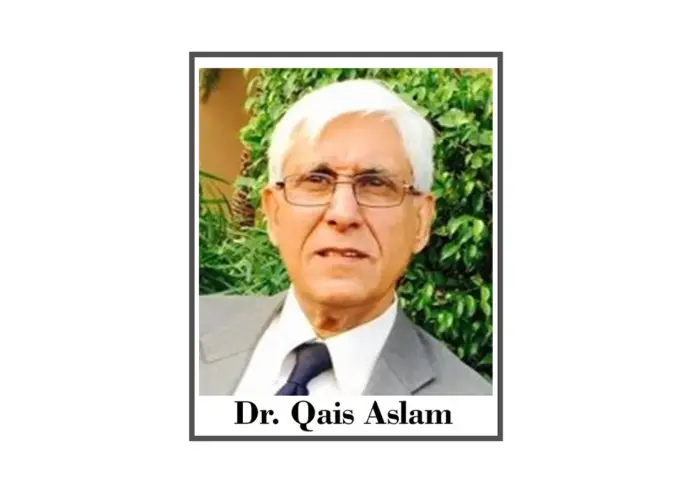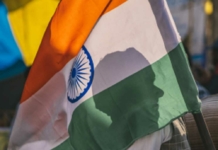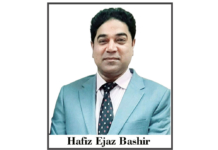Policy interest rates are a policy instrument of the Central Bank that is used to manipulate money supply in the country. This policy measure has far-reaching consequences on different sectors and players in the economy. The direct, but a negative relationship of the bank rate is on the money supply which in turn is directly and positively related to the price levels in the country, thus this measure controls both the price levels (inflationary pressures or demand-pull inflation) and consumer demand, as well as saving-investment ratios of the economy. On the other hand, this policy measure has an opposite (to demand) effect) on the cost of doing business (cost-push inflation) and therefore on the supply side, thus on employment levels, income levels and GDP growth rates in the country.
In the open economy (international economic and financial relations), this manipulation of bank rates would also have short-run and long-run consequences, both on trade (export and import), the balance of payments and consequently, on the exchange rate parity between the buying power of the local currency against the foreign currencies usually the US dollar and subsequently on both the inflationary pressures as well as the employment and income levels in the economy. These fluctuations in the exchange rate would also impact the international debt of the country in local currency and therefore its fear of default if there are immediate payments on debt and interest that have to be paid out and therefore on the budget. It would have different effects on direct investments and portfolio investments to and from the country, thus affecting the foreign exchange reserves in dollar terms.
It should be noted that these effects need not be immediate, but have a time lag when information through the market forces reaches both the market players on the demand side and the supply side, on the savings side and the investment side, the long-term foreign investors (desirable investment) and the short-run portfolio foreign investments (hot money) of the economy. Subsequently, the reaction of the market players to their self-interest might not be as desirable as the policy enforcers in the central bank and the government would want the outcome to be under the circumstances of manipulating the bank rate.
In case of Pakistan, in June 2021 the policy interest rates were at 7%, risen to 7.25% in September 2021 and again to 8.75% in November 2021 and to 9.75% in December 2021. These policy rates were increased to 12.25% in April 2022, to 13.75% in May 2022, to 15% in July 2022 and now are 16% since November 2022. Or a rise of 9% between June 2021 and November 2022.
In December 2022 interest rates in the ten leading economies were: USA 4%; China 3.65%; Japan (-) 1%; EU 2%; India 6.25%; UK 3%; Canada 4.25%; South Korea 3.25%; South Africa 6.25%; and Russia 7.5% – all in single digits and Japan in a minus. In December 2022 interest rates in the ten leading economies were: USA 4%; China 3.65%; Japan (-) 1%; EU 2%; India 6.25%; UK 3%; Canada 4.25%; South Korea 3.25%; South Africa 6.25%; and Russia 7.5% – all in single digits and Japan in a minus.
The impact of this drastic rise in policy interest rates has been dramatic and contractionary on the economy. As the statement goes, “the cure is more painful than the sickness of the economy”. Let us look at the state of the economy on these specific dates in June-December 2021 when policy interest rates were 7% to 9.75%, and in July – December 2022 when these interest rates almost doubled at 15% to 16% subsequently.
Inflation: In June 2021, Pakistan’s inflation rate was 9.1%, and by December the 2021 inflation rate was measured at 9.5%. While in July 2022 the country’s inflation rate came down to 8.5%, and then was record 23.8% in November 2022. In other words, Pakistan inflation rate was 9.1% when interest rates were 7% and inflation was 23.8% when interest rates were 15%. Both interest rates and inflation rates increased in the same direction. By contrast the world average inflation rate in 2021 was 3.42% and is expected to rise to 8.8% in 2022.
Unemployment: In 2021, the Unemployment rate in Pakistan was calculated at 4.35%, while 2022 unemployment rate in December 2022 reached 6.5%. In other words, the unemployment rates were 4.35% when interest rates were between 7% – 9.75% and reached 6.5% when interest rates are 15% – 16%.
GDP Growth rates: Pakistan’s GDP Growth rate in 2021 was a robust 6.0% when the interest rates were 7% to 9.75%, and in 2022 is growing by only 2.0% in 2022 when the interest rates are 15% to 16%.
Exchange Rates: In June 2021, the exchange rate in Pakistan of one US dollar was an average of Rs. 156 when the interest rates were 7%. In December 2021 the exchange rate was Rs. 240 when interest rates were 15%, and in December 2022 the exchange rate was an average of Rs. 224.5 to one US $ when the interest rates are 16%.
BOP & Trade Deficits: Pakistan’s Trade Deficit in December 2021 was US $ 34.47 billion and in December 2022 is US $ 27.8 billion. Pakistan’s Balance of Payments Current Account Deficit in July 2021 was US$ 2.55 billion, in December 2021 was US $ 3.53 billion, in June 2022 was US $ 4.32 billion, and in December 2022, BOP current Accounts deficit is US $ 2.2 billion.
Pakistan imports oil and gas for its energy needs, cotton and silk etc. as raw materials for its exports; wheat, cereals, spices, onions, tomatoes and other vegetables etc. For its food needs, machines for its industrial needs and pharmaceuticals for its health needs and more, although the government has banned the import of luxury items but necessities are enough to increase the import bill and the deuteriation of terms of trade for Pakistan. The country only exports traditional textiles and items from cottage industry that has a limited market and price competition from China, India and other compotators.
Direct Foreign Investments: In June 2021, Pakistan received FDI worth of US $ 1.05 billion in first half of 2021-2022 when interest rates were 7% to 9.75% and FDI worth of US $ 0.95 billion in October 2022 when interest rates were 15%, showing a fall in FDI to Pakistan of US % 0.1 billion between December 2021 and October 2022. Major investors to Pakistan are USA and China and now Saudi Arabia. There is both a trust dificit as well as lack of profit margins due to inbuilt inefficiencies on part of Pakistani partners that are limiting inflow of direct investment to the country.
Portfolio Foreign investment: According to SBP Report, “The data reached an all-time high of US $ 3.028 billion in June 2021 when interest rates were 7%, and a record low of US $ minus (-)1.285 US$ bn in December 2021” when interest rates were 9.75%, and was minus US $ (-) 30.0 billion in July 2022 when interest rates were 15%.
Foreign Exchange Reserves: According to State Bank of Pakistan Reports, in December 2021 when interest rates were 9.75%, the SBP reserves stood at US $ 22.81 billion. In December 2022 when the interest rates are 16%, these reserves stood at only US $ 6.72 billion, which is minimum amount in many a year.
To sum up, when the policy interest rates were between 7% and 9.75% in 2021, the GDP growth rate was a robust 6.0%, the unemployment rate was 4.35%, the inflation rate in the country was 9.5%, the Rupee -dollar parity was Rs. 156 to one US $, the FDP to Pakistan was US $ 1.05 billion, the portfolio investment was US $ 3.028 billion, the trade deficit was US $ 34.47 billion, and the Balance of Payments Current Accounts deficit was US $ between US $ 2.5 billion at interest rates of 7% and US $ 3.5 Billion at interest rates of 9.75%.
In 2022 when the interest rates in Pakistan are 15% and 16% respectively, the country’s GDP growth rate is at a dismal 2%, the unemployment rate is 6.5%, the inflation rate in the country are 23.5%, the Rupee -dollar arity is 224.5 to one US $, the FDP to Pakistan are US $ 0.95 billion, the portfolio investment are minus US $ (-) 30.0 billion, trade deficit is US $ 27.8 billion, and the Balance of Payments Current Accounts deficit is US $ between US $ 2.2 billion and the foreign reserves of SBP in 2021 were US$ 22.8 billion and in December 2022 these reserves are only US $ 6.72 billion.
That would mean that at single-digit interest rates the economy was growing, inflation was a permissible level and so was unemployment rates. The exchange rates were stable and there was both FDI and portfolio Invesment in the country. The Trade deficit and Balance of Payments Current Account Deficit were high due to high imports.
In 2022, due to contractionary monetary policy, GDP growth rate became very low, inflation and unemployment became very high above the permissible levels and even the exchange rates increased in favor of the US dollar. The impact of contractionary policy is that trade balance and BOP deficit has improved, but both FDI and portfolio investment to the country has decreased substantially with outflow of capital worth of US $30 billion.
In one line the impact of increase of interest rates on all the important macroeconomic variables has been negative and the economy has declined drastically, also. It can be seen that even the rise in exchange rate towards the US dollar and the interest rates have not checked the flight of capital from Pakistan that went abroad to a tune of US $ 30 billion as portfolio investments and therefore the foreign exchange reserves have diminished drastically to a minimum of US $ 6.72 billion when half of this amount belongs to Saudi Arabia and another half to China as goodwill gesture towards the people of Pakistan, therefore in technical terms there is no money in reserve to pay our foreign labilities from our exports or remittances etc..
It is recommended to the Government that people of Pakistan come first and in order to improve the economy’s vital statistics inflation should decrease, employment should increase dollar rate should come down, trade balance should become favorable through increase in exports and Balance of Payments should also decrease. This cannot happen if interest rates are as high as 16%, they should come down to a single digit of 8% and then with an expansionary fiscal and monetary plicy there would be growth, and employment levels that would favor both the supply (investors) side and the demand (consumers) side. Fixing the fundamentals both for the short run as well as the long run economic growth are essential for 230 plus million population of Pakistan.






